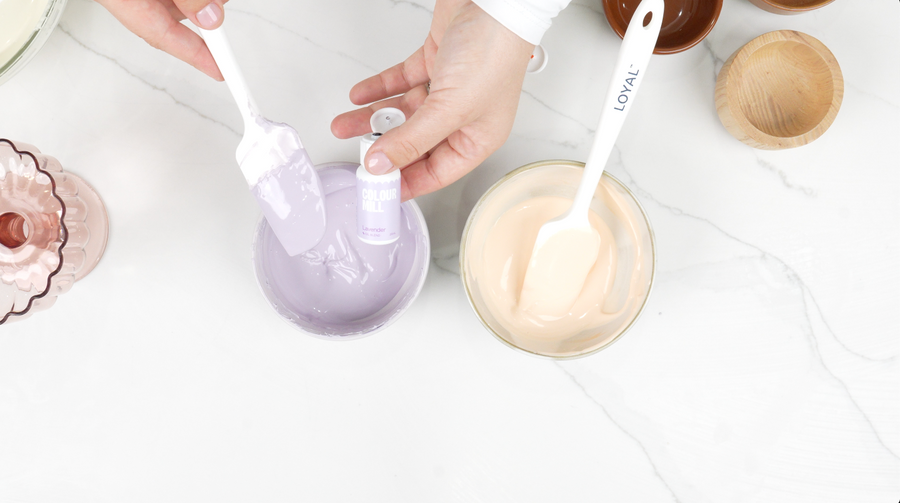2. A little goes a long way
When it comes to colouring chocolate, slow and steady wins the race. Adding colour too quickly can send your chocolate into a meltdown. And with our new high concentration formulas, this caution is key. So, take it easy – a few drops at a time will do the trick to hit that true label hue.
Here's a few fool-proof ways you can avoid going overboard:
Colour to Chocolate Ratio
Nailing those pastel vibes is still as effortless as ever! We've whipped up a ratio for coloring chocolate to ensure your pastels and hues are picture-perfect:
- Neutralising: 100g chocolate to 4g of White Oil Blend.
- Colouring to Label: 100g chocolate to 4 drops of pigment.
The Toothpick Method
Insert a toothpick into the lid of your bottle so that the toothpick is saturated with pigment. Then, swipe the toothpick into your chocolate. Repeat this process as necessary until you reach your desired hue!
Gone overboard? Don't worry!
If you have gone overboard with your colour and it's darker than you'd like, don't stress! Just add a splash of White Oil Blend into your coloured chocolate to lighten it up.




